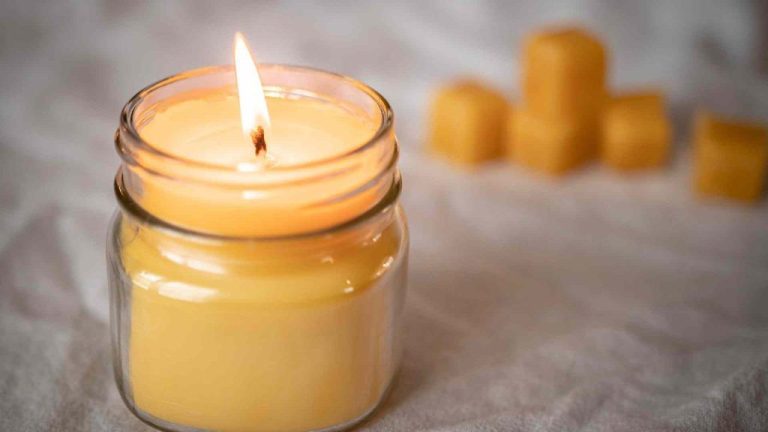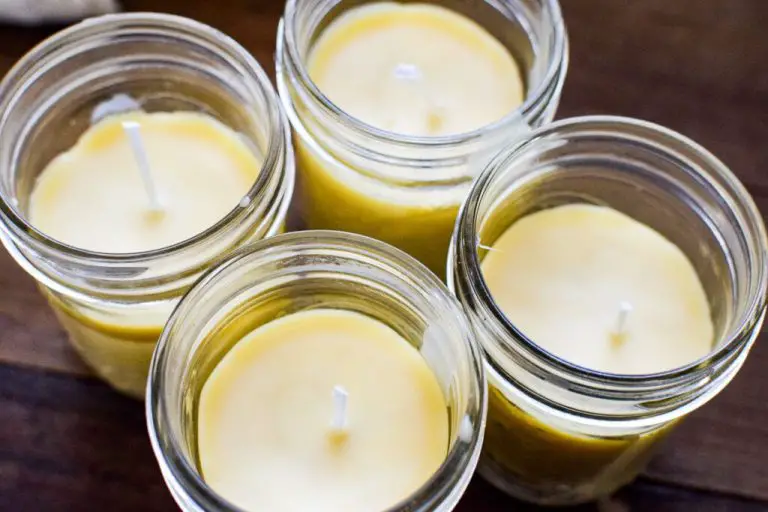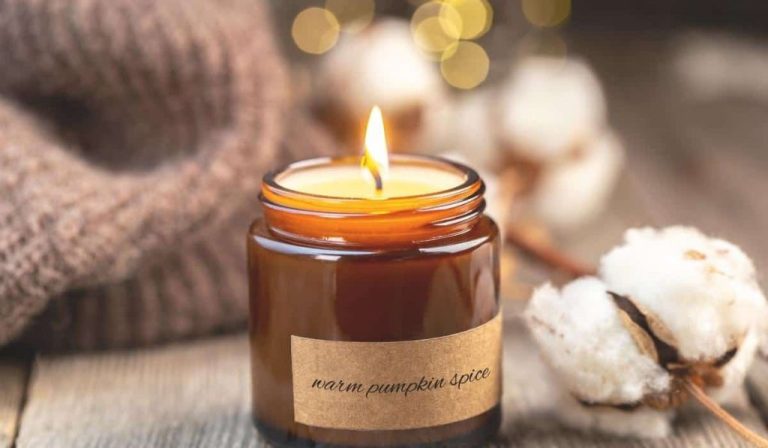What Are Usually Made Of Wax?
Wax is a substance made from organic materials that is soft and malleable at room temperature. It melts at relatively low temperatures and becomes a free-flowing liquid. When cooled, wax returns to a solid state and retains its shape. Wax has unique chemical and physical properties that make it useful for a variety of applications.
The main chemical component of wax is long-chain hydrocarbons known as alkanes. These hydrocarbon molecules give wax its pliable, non-sticky texture. The melting point of a wax depends on the length of its hydrocarbon chains – longer chains result in higher melting points. Wax also repels water due to its hydrophobic properties. When combined with pigments and scents, wax takes on even more versatility for commercial and artistic uses.
Candles
One of the most common wax objects, candles have a long history dating back thousands of years. The earliest candle-like objects were made from tallow, which is rendered animal fat, and plant wicks. According to History of candle making – Wikipedia, candle making was developed independently in many places around the world. The Romans used dipped candles made from tallow. Evidence also suggests candles were developed in Ancient China around 200 BCE, Japan in the Kofun period, and Ancient Egypt. Candles were initially developed as a practical means of providing artificial light. Early candle wicks were made from dried plant fibers like flax or mullein.
Candle making evolved over the centuries as new materials became available. Beeswax started to replace animal fats in Europe around the Middle Ages. Paraffin wax, derived from petroleum, was introduced in the mid-1800s and allowed the mass production of inexpensive candles. Today, most candles are still made from paraffin wax, sometimes blended with stearic acid or palm wax. Soy wax and beeswax have also grown in popularity for natural candles. Wicks are typically cotton, but can also be paper or metal.
While once a necessity, candles are now mainly used decoratively and for ceremonies. They remain a beloved item in most households. Modern advancements in waxes, wicks and molds have allowed candles to become an artisanal craft as well. Scented and shaped candles are common gift items.
Wax seals
Wax seals have a long history of being used for authentication and securing correspondence. According to this source, wax seals date back thousands of years to ancient Mesopotamia, where engraved cylinders were pressed into clay tablets. In medieval Europe, nobles and royalty used wax seals to secure and authenticate documents. A lump of wax would be pressed onto a document and then stamped with a unique engraved seal containing initials, symbols, or coats of arms. This helped verify the identity of the sender and the integrity of the document.
Over time, stamped wax seals became closely associated with authority and official correspondence. They were an integral part of the bureaucratic systems of monarchs and churches. Wax seals continued to be used through the 18th century, when they were supplanted by other modes of authentication. But even today, some institutions like colleges and municipalities continue to use ceremonial wax seals for tradition and symbolic purposes.
Wax figures
Wax figures are commonly made of wax and can be found in museums or special attractions. Wax figures have a long history, with their origins tracing back to the Middle Ages where they were offered to churches. Wax masks were also made of monarchs and important figures. Over time, wax figures evolved into a popular exhibit at special wax museums and attractions. Some of the most well-known wax museums include Madame Tussauds, the Musée Grévin, the National Wax Museum, and others. These wax museums display hyper-realistic and intricately crafted wax figures of celebrities, historical figures, and notable people. For example, according to the article “Wacky Wax Museums” on KPSTARBOARD, Madame Tussauds in London has over 300 wax figures on display for visitors to see. The museum strives to make the figures seem as real as possible, even going so far as to use real hair and allow visitors to pose with the figures. Overall, wax figures have become a staple of certain museums and attractions where people can view amazingly life-like recreations of famous people and characters.
Crayons
Crayons are coloring tools made primarily for children. Most crayons are made of paraffin wax. Paraffin wax is a soft wax derived from petroleum, coal or oil shale that allows crayons to be molded into sticks. Pigments are added to the molten paraffin wax to give crayons their vibrant colors.
The process of making crayons was industrialized in the 1800s. Before that, artists would create their own wax writing instruments by mixing pigments with beeswax. Edwin Binney and C. Harold Smith founded the company Binney & Smith in 1885, which produced dustless chalk and later the Crayola crayon. Their product revolutionized the art supplies market with the first commercially available wax crayons in 1903.
Today, most major crayon manufacturers are still based in the United States. The largest is Crayola, which produces over 3 billion crayons per year at their factory in Easton, Pennsylvania. Visitors to the Crayola Experience can learn about the history of crayon making and see how crayons are molded, labeled and packaged [1]. Crayons remain a classic, creative tool to introduce children to the joys of coloring and drawing.
Surfboard Wax
Surfboard wax is an important material used in surfing to help surfers maintain grip on their surfboards. The top surface of a surfboard is covered in a layer of surf wax to create traction between the board and the surfer’s feet. This grip allows the surfer to maneuver the board and maintain control while riding waves.
Most surf wax is composed of a blend of paraffin, microcrystalline and beeswax. The wax is applied in a thin layer over the deck of the surfboard using a wax comb. The wax then cools and solidifies to form a textured, tacky surface that acts like sandpaper, gripping the bottom of a surfer’s bare feet. Soft waxes provide more adhesion but wear away faster, while harder waxes last longer but provide less grip. Surf wax comes in a variety of forms from bulk wax blocks to pre-shaped wax bars designed to fit different board surfaces. Surfers often customize their wax with additives like coconut oil to achieve their desired level of stickiness.

Proper surf wax application is an essential skill for surfers to ensure they have the right amount of traction to surf safely and perform maneuvers on waves. The grip from surf wax allows a vital connection between surfer and board in order to paddle out through waves, pop up onto their feet, turn, and ride the face of waves with control.
Beauty Products
Many beauty products contain wax, including lipstick and chapstick. Wax helps provide structure, shine, and moisture retention in cosmetics. Beeswax and carnauba wax are common types used. According to source, cosmetics often contain wax derived from insects.
Lipstick gets its solid form from wax, which also helps it glide onto lips smoothly. Beeswax and carnauba wax are often used. The wax helps the color pigments adhere and gives lipstick a shiny finish.
Chapstick and lip balm also rely on wax, usually beeswax. The wax helps seal in moisture and gives chapstick its waxy texture and ability to smoothly coat the lips. The wax content helps chapstick stay solid at room temperature but melt when applied.
Cheese wax
Cheese wax is primarily used in cheesemaking to protect the cheese. It creates a barrier between the cheese and the surrounding environment, helping to prevent the cheese from drying out or absorbing unwanted flavors. According to https://www.cc-craft.co.uk/cheese-wax, cheese wax helps regulate moisture loss and allows cheeses like cheddar to age properly.
The wax coating provides an airtight seal that allows cheese to ripen from the inside out. It also helps prevent mold growth on the cheese’s surface. Cheeses that are aged for longer periods of time, like gouda and edam, are often coated in wax as part of the maturation process.
Wax Paper
Wax paper is a versatile paper product coated with a thin layer of wax on each side, which makes it non-stick and moisture resistant. It was invented in the late 19th century and became widely popular in American kitchens by the 1920s.
Today, wax paper is commonly used for packing lunches and covering food for storage. The wax coating prevents leakage and keeps food fresh. Wax paper can also be used for baking and cooking. It is useful for lining pans, wrapping homemade candies, and covering rising doughs. However, unlike parchment paper, wax paper is not oven safe at high temperatures and should not be used for baking (The Shocking Truth About Wax Paper in the Oven). At low temperatures, wax paper can be briefly used to line cake pans or wrap baked goods.
Overall, wax paper is a handy kitchen tool for covering and storing foods, making candy, proofing dough, and limited baking needs. Its non-stick and moisture blocking properties make it useful for packing sandwiches and snacks.
Conclusion
There are many objects we encounter in everyday life that are made from wax. Wax is a versatile material that lends itself well to being molded, shaped, and colored for various uses. The most well known wax object is candles, which have been used for light and ambiance for centuries. Wax seals were once used to seal letters and important documents. Today, wax seals still adorn fancy invitations and certificates. Wax figures of famous people can be found in wax museums around the world. Crayons and colored pencils use wax as their core material to create vivid colors for children’s artwork. Surfers rub wax on their boards to help improve traction and grip. Beauty and skincare products like lip balm and lotions often contain wax to hold moisture and create protective barriers on skin and lips. The rinds of cheese are coated in edible wax to prevent drying out. Wax paper lines baking sheets and wraps food with its nonstick surface. As we can see, wax in its many forms permeates many aspects of daily life.





